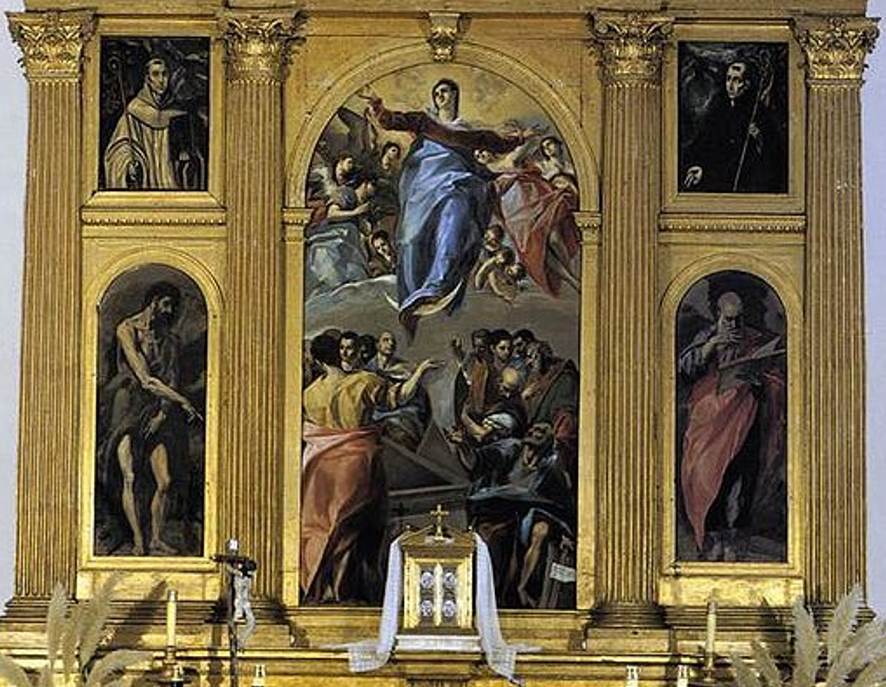When Domḗnikos Theotokópoulos (1541-1614) moved from his home country in the Kingdom of Candia, modern-day Crete in Greece, to Venice, he was already an established painter looking to make a name for himself.
He lived and worked in Venice and Rome and as the greatest masterpieces of the famous Renaissance artists who lived and worked there in the late 15th and early 16th centuries.
This influence is still reflected in paintings that he created during the first years of his arrival in Toledo, Spain, a city where he would live and work for the rest of his life.
Let’s take a closer look at some of the most interesting facts about the Assumption of the Virgin by El Greco, one of the pivotal artworks in the career of Mannerist artists El Greco.
1. It was the first painting that El Greco produced in Toledo
When El Greco moved from Italy to Madrid in the year 1577, he had hoped to become the court painter of Philip II of Spain. This didn’t work out as planned but with the help of a friend, he managed to settle in Toledo and earn commissions from the local patrons.
Toledo was an important city in 16th-century Spain and was even considered to be the religious capital of the country. Although El Greco didn’t plan to stay here, he eventually spent the final 37 years living and working in this city just southwest of Madrid.
The Assumption of the Virgin by El Greco was the first commission he earned in the city and it was intended to become the altarpiece of the Santo Domingo el Antiguo church, which is part of the Monastery of Saint Dominic of Silos in the heart of Toledo.
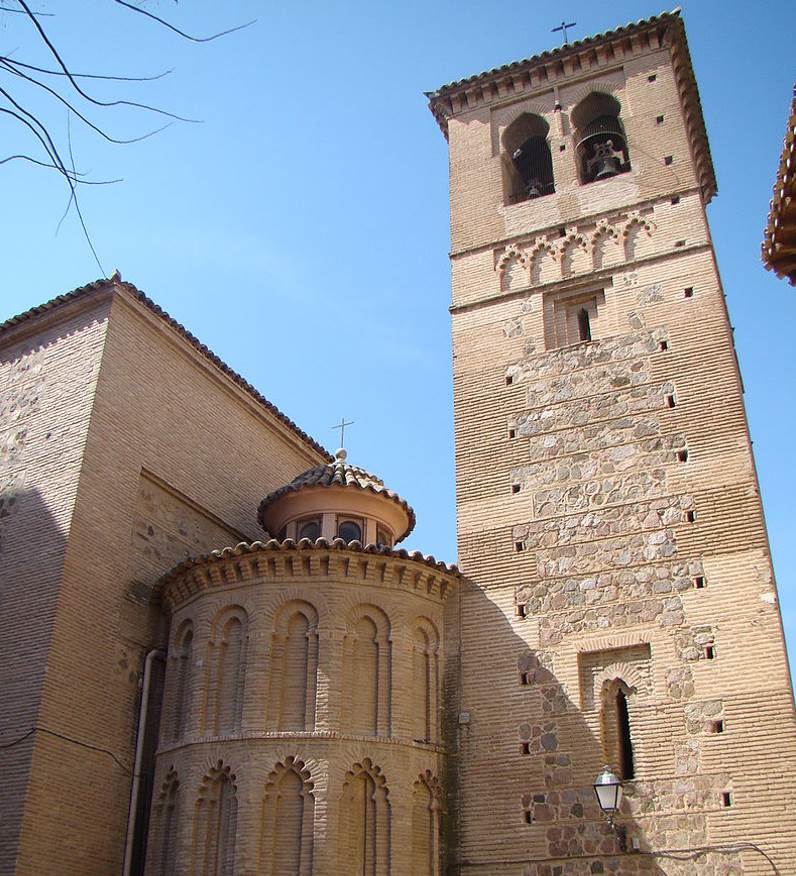
2. It was part of a much larger commission to decorate a church
The altarpiece of the church in Toledo was to become a monumental work of art consisting of various paintings and decorations. Seven paintings were to decorate the high altar and 2 paintings were for the side altars.
The Assumption of the Virgin by El Greco was placed in the central section of the high altar while the upper painting is a work called “The Holy Trinity.”
El Greco produced these 9 paintings between 1577 and 1579 and they were received very well. It not only firmly established his reputation, allowing him to continuously earn commissions, but also resulted in the fact that he never left Toledo for the next 37 years.
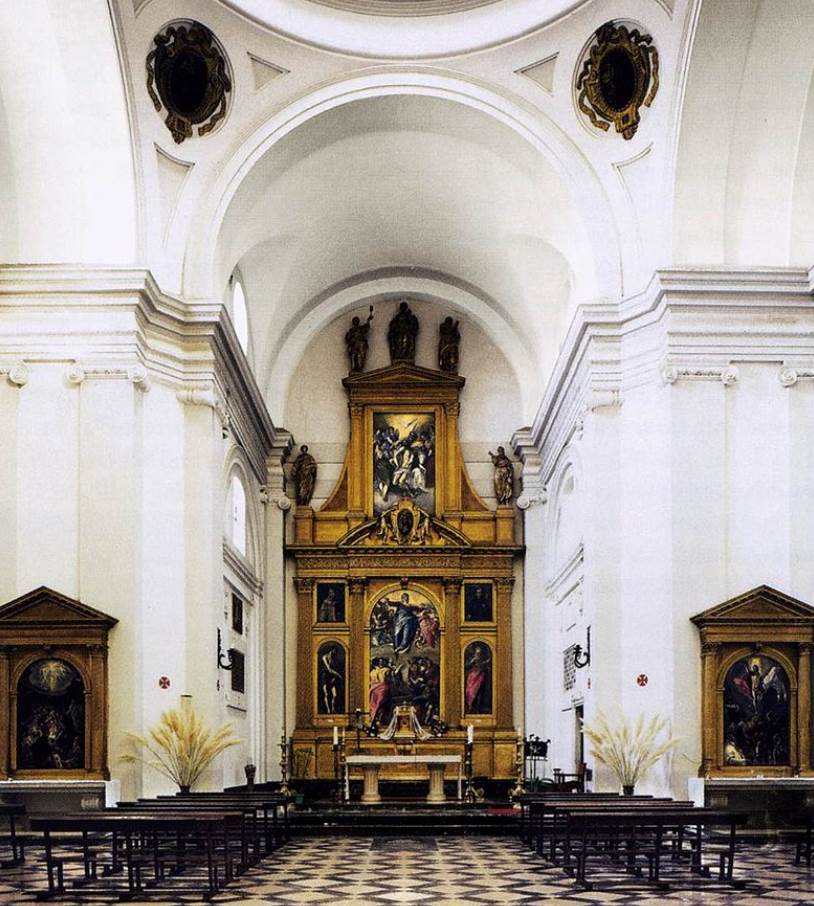
3. It depicts a story that isn’t mentioned in the New Testament
The Assumption of the Virgin is a story referring to the raising of Mary, the mother of Jesus Christ, to the Heavens above following her life on Earth. This story wasn’t explicitly mentioned in the New Testament but was included only in the 3rd and 4th-century versions of the Bible.
The story was believed to be true by the Middle Ages and started appearing in art as early as the 12th century. It has been painted by a wide variety of artists along with a wide variety of other stories related to the life of Mary.
The story of Mary’s assumption underwent some changes throughout the centuries as well. According to the 13th-century “Golden Legend,” the 12 Apostles were present during this event as well. That’s why they are included in this work by El Greco in the bottom section of the painting.
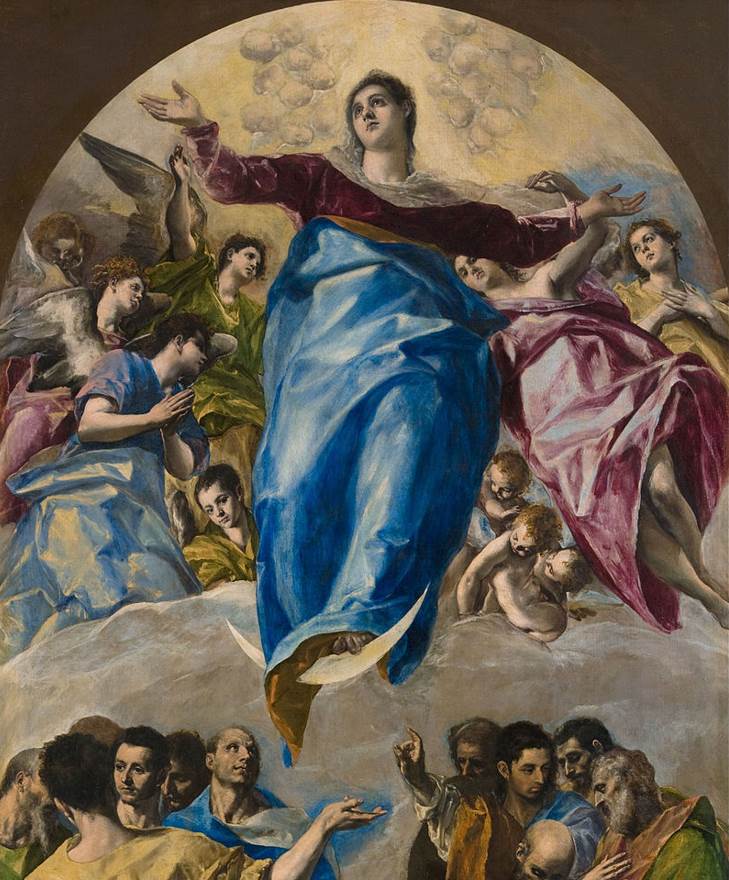
4. El Greco was clearly influenced by artists working in Rome and Venice
The interesting fact about the Assumption of the Virgin is that we can see the evolution of Renaissance art evolving into Mannerism and subsequently flowing into the theatrical style of the Baroque artists.
El Greco was influenced by one of the major works of Titian depicting Mary’s assumption. This work is also referred to as the “Frari Assumption” because of its location at the Basilica di Santa Maria Gloriosa dei Frari in Venice, Italy.
The composition is very similar as the Virgin Mary is accompanied by several angels in the top section of the painting while the Apostles are looking at the scene next to her empty tomb in amazement from below.

5. The painting had multiple owners after spending 2 centuries in Toledo
Upon completion, the painting was placed inside the monumental altarpiece of the church of the Monastery of Santo Domingo el Antiguo in Toledo. It resided here for well over 200 years.
It was sold to Infante Don Sebastián Gabriel de Borbón y Braganza in Madrid, an Iberian prince of Portugal and Spain, who brought it to Madrid in the year 1830.
Following a brief spell at the Museo Nacional de Trinidad in Madrid, it was returned to the prince and remained in the collection of his widow, the Infanta María Cristina de Borbón, until she passed away in the year 1902.
Her heirs briefly lent it to the Museo del Prado in Madrid between 1902 and 1904 after which it was sold to a French art dealer named Paul Durand-Ruel with funding provided by American industrialist H. O. Havemeyer.
From here, it was eventually sold to the Art Institute of Chicago, one of the most famous museums in the United States, where it’s still on public display today.
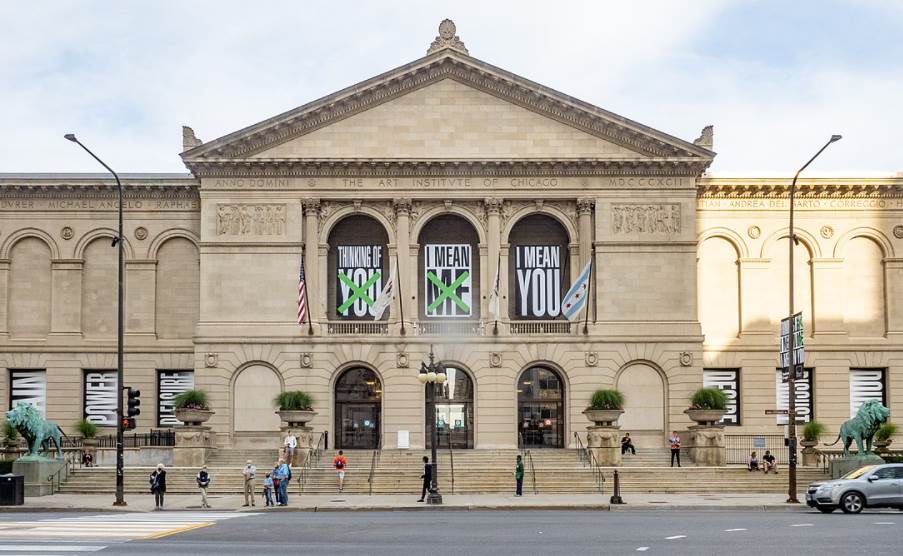
More interesting facts about the Assumption of the Virgin by El Greco
6. The altarpiece at the church in Toledo is massive, something emphasized by the monumental scale in which El Greco painted Mary’s Assumption.
The painting has dimensions of 403.2 × 211.8 centimeters (158.7 × 83.4 inches). This not only makes it the first painting he produced in Toledo, but also the largest of the Santo Domingo el Antiguo Altarpiece.
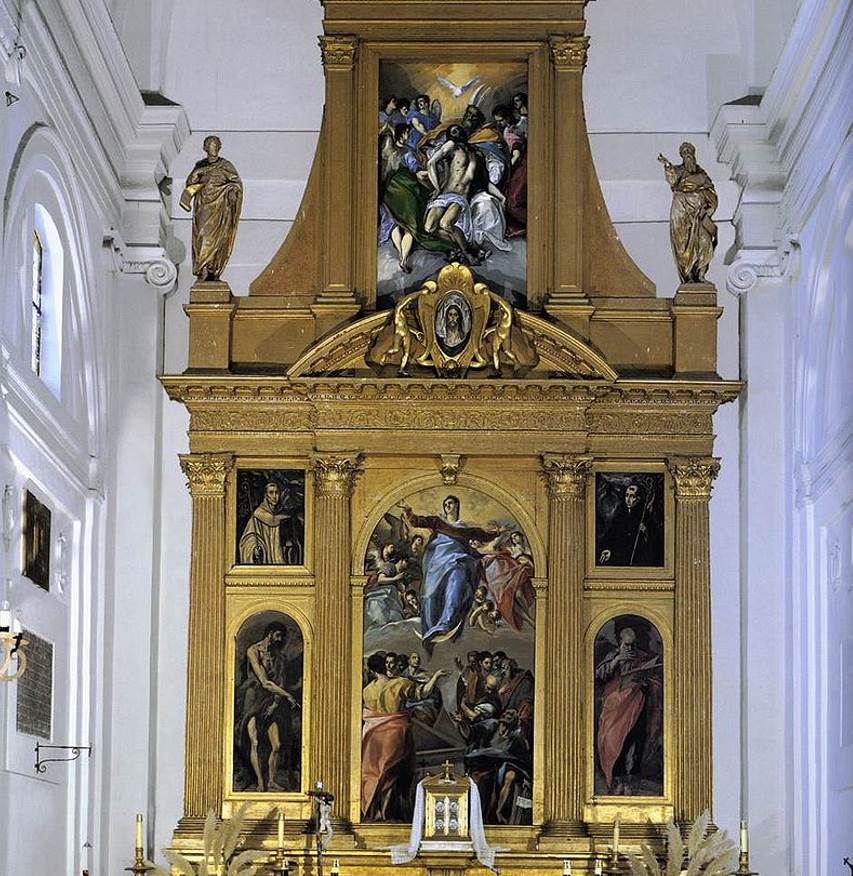
7. When El Greco arrived in Toledo he became friends with Luis de Castilla, the son of the son of Diego de Castilla, the dean of the Cathedral of Toledo.
It’s through this friendship that he managed to acquire the commission for this monumental altarpiece along with various other works for churches in Toledo. One of his most famous works called “The Disrobing of Christ,” which is located in the Sacristy of Toledo Cathedral, also dates from this period.
8. Titian wasn’t the only inspiration for this work because we can also see a clear influence from the time that he spent in Rome. The influence of works by Michelangelo is clear in that he painted large figures making natural movements.
9. Nearly half a century after El Greco completed his version of the assumption, Flemish Baroque artist Peter Paul Rubens (1577-1640) produced a painting of Mary’s Assumption (1625-1626) as well.
This work is not only one of Rubens’ greatest works but is also one of the most famous attractions inside the Cathedral of Our Lady in Antwerp. It serves as the monumental altarpiece of this remarkable Cathedral in Belgium.
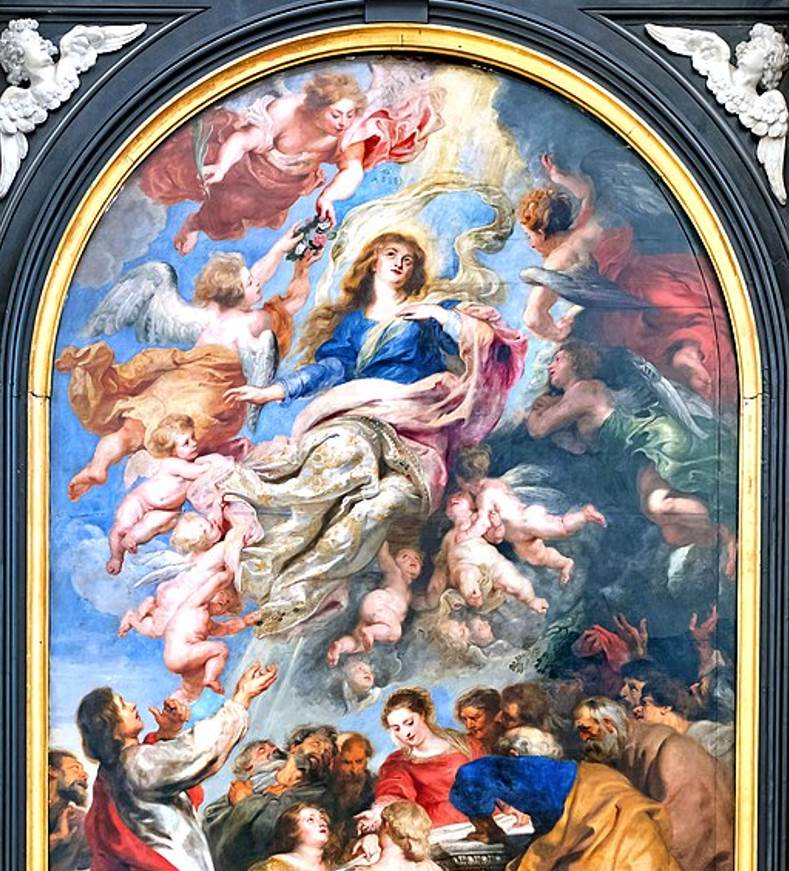
10. Although the painting is now on public display at the Art Institute of Chicago, we can still see a copy of the work in the church in Toledo. This copy is adjoined by several other copies as well.
Not all the 9 paintings that make up the complete altarpiece are copies, however, because 2 depicted saints, “St John the Baptist” and “St John the Evangelist,” along with a painting called “Resurrection” on the right-hand side of the altarpiece, are the original ones.
